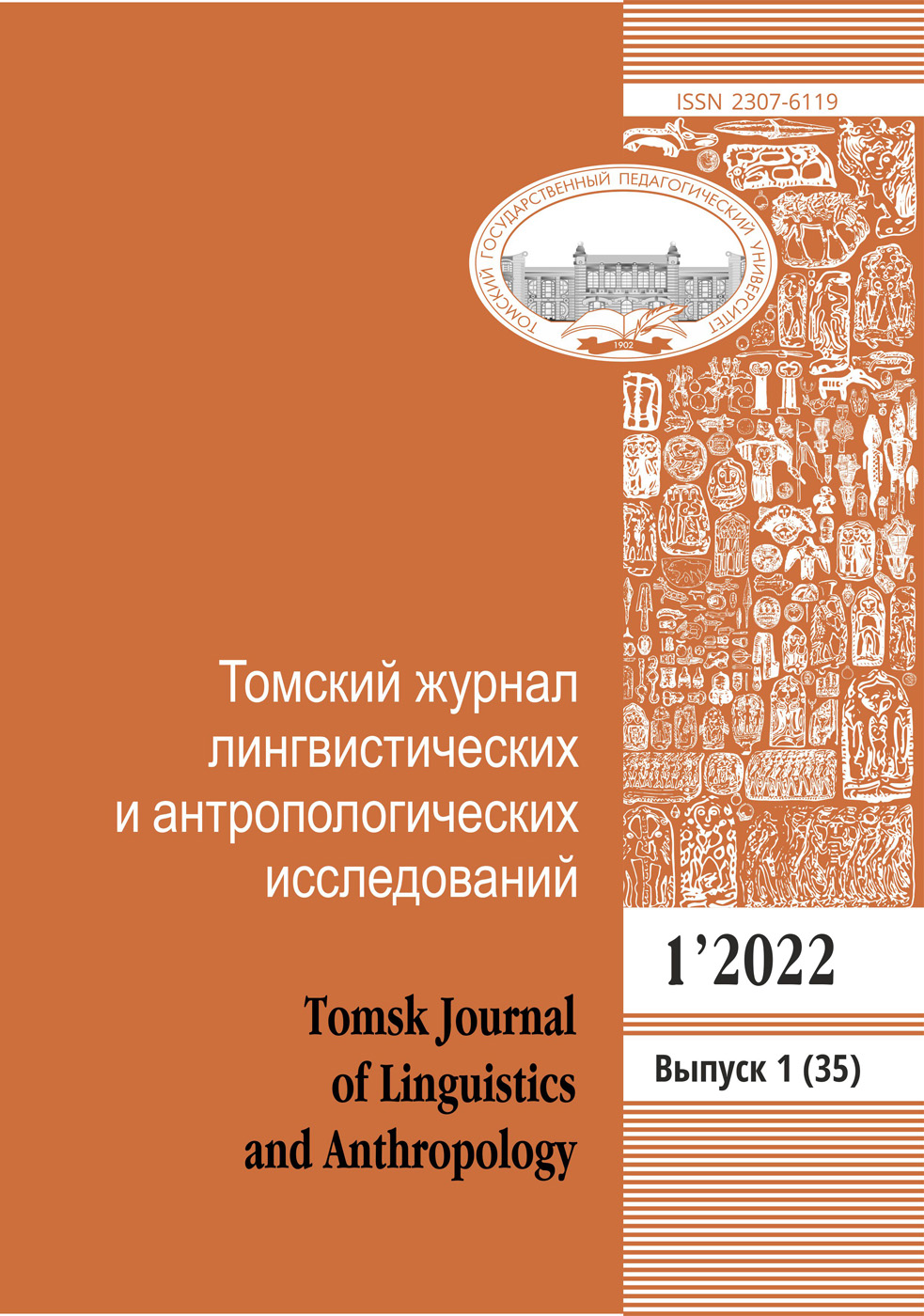TIME MEASUREMENT: PECULIARITIES OF REPRESENTATION IN MODERN ENGLISH
The article deals with the peculiarities of using language quantifiers which express time measurements in Modern English. According to a widespread conception in the literature of linguistics and philosophy, space and time are deeply intertwined with each other, both in language and in underlying concepts. As both space and time can be measured the category of measure and its language representatives are inseparably connected with space-time system. To gain a better insight into the relations between time and measure the revealed language means have been gathered into certain groups, which form the structure of the functional-semantic field representing the category of time. The core of the field is represented by the metric system of time measurements and some traditional units used in Englishspeaking countries. The latter part of the core is rather small in number. Of special interest are inaccurate and unspecified measures, forming the peripheral zone of the functional-semantic field under discussion.
Keywords: category of time, category of measure, time quantifier, unspecified measure, functional-semantic field
References:
1. Encyclopedia of Philosophy. Ed. by D. M. Borchert. 2nd ed. Detroit, N. Y., Thomson Gale, 2006. Vol. 2. 761 p.
2. Encyclopedia of Philosophy. Ed. by D. M. Borchert. 2nd ed. Detroit, N. Y., Thomson Gale, 2006. Vol. 9. 889 p.
3. The Shorter Routledge Encyclopedia of Philosophy. Ed. by E. Craig. L., N. Y., Routledge, 2005. 1077 p.
4. Encyclopedia of Philosophy. Ed. by D. M. Borchert. 2nd ed. Detroit, N. Y., Thomson Gale, 2006. Vol. 6. 681 p.
5. Petrochenko L. A. Sredstva vyrazheniya malykh velichin (na primere angliyskikh sushchestvitel’nykh) [The Means of Expressing Small Quantities (English Nouns Used as an Example]. Vestnik Tomskogo gosudarstvennogo pedagogicheskogo universiteta – TPSU Bulletin, 2014, vol. 10 (151), pp. 29–33 (in Russian).
6. Krasnykh V. V. Etnopsikholingvistika i lingvokul’turologiya: Kurs l’ektsiy [Ethnopsycholinguistics and Cultural Linguistics: Course of Lectures]. Мoscow, Gnozis Publ., 2002. 284 p. (in Russian).
7. Polcaro V. F. The concept of time, from Palaeolithic to Newtonian physics. URL: http://www.epj-conferences.org/articles/epjconf/pdf/2013/19/epjconf_tm2012_ 03001.pdf (accessed 4 March 2016).
8. Ast O. Archetypes and architecture of time: an artistic inquiry into the nature of time, space and information. URL: http://www.epj-conferences.org/ articles/epjconf/pdf/2013/19/epjconf_tm2012_04003.pdf (accessed 4 March 2016).
9. Aveni A. F. Empires of Time: Calendars, Clocks, and Cultures. N. Y., Basic Books, 1989. 371 p.
10. Arntzenius F. Space, Time and Stuff. Oxford, Oxf. Univ. Press, 2012. 243 p.
11. Tenbrink Th. Space, Time, and the Use of Language: An Investigation of Relationships. Berlin, N. Y., Mouton de Gruyter, 2007. 345 p.
12. The British National Corpus (BYU-BNC). URL: http://corpus.byu.edu/bnc/ (accessed 15 February 2016).
13. The Oxford Dictionary, Thesaurus, and Wordpower Guide. Ed. by C. Soanes, M. Waite, S. Hawker. Oxford, Oxf. Univ. Press, 2001. 1542 p.
14. Time. URL: https://en.wikipedia.org/wiki/Time (accessed 15 February 2016).
15. Encyclopedia of Time: Science, Philosophy, Theology, & Culture. Ed. by H. James Birx. L., SAGE Publications, 2009. 1541 p.
Issue: 6, 2016
Series of issue: Issue 6
Rubric: GERAMNIC AND ROMANCE LANGUAGES
Pages: 20 — 24
Downloads: 654





